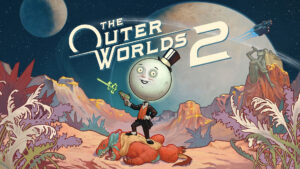Hoo-wee, good golly, this game brought me BACK! Chronicles of the Wolf, made by Migami (of the Castlevania fangames “The Lecarde Chronicles” fame) and published by PQube and PixelHeart, came out last June 19, 2025, for the PS4/PS5, Nintendo Switch, Xbox One, Xbox Series X/S, and PC.
First off, a bit of background, and rest assured, it has relevance to the game. Migami Games released the Lecarde Chronicles fan games years ago, much to fans’ enjoyment, and the improvements and system reflect themselves in Chronicles of the Wolf. The sprites are nice, large, and quite detailed, and while the combat system still leaves some changes to be desired, the overall enhanced feel of the fangames, as mentioned earlier, is still quite amazing to experience. The charging for special attacks, the upgradable skills found to improve exploration, and the various hidden sub-quests to reach the true ending are all well-crafted and adhere to both story and gameplay very well.
The story is set in France during the hunt for the Beast of Gevaudan between 1794-1797, though heavily fictionalized and leaning towards the feel of a Castlevania-ish game. A cult has appeared with 6 mysterious prominent members, all of whom you, as Mateo Lombardo (no relation to Matteo Lombardo, Italian former footballer), last living member and apprentice of the Rose Cross Order, must discover and defeat to get to the bottom of the mystery and fear that has befallen Gevaudan.
Will you keep fighting, or will you fall for the temptation of power? With multiple endings available at various points in the game, only you can answer that, dear reader. Oh, for those who want to know, the area of Gevaudan is now known as Lozere and spans up to even part of Haute-Loire.
Gameplay-wise, it stacks up with the feel of the Castlevania fan games that became the building blocks for it. Bosses are hard and unforgiving, so learning their patterns is a MUST if you want to achieve victory over the encounter, though some leveling will be required if you wish to have a fight on equal footing or have an advantage, even. Normal enemies are plentiful to fight, especially in the penultimate and final areas of the game, and even grouped-up bosses, to proceed.
Platforming, for its part, needs precision and pre-planning as you get more jumps and air dashes to cross platforms, or reading the moving ones’ pattern to proceed and overcome. On one hand, the regular bosses you must fight are quite daunting already, while the superbosses take up a lot of time and planning on top of pattern reading to defeat, considering you farm them late-game to reach the maximum level. My only complaint is that the rope portions of the game could use a bit tighter response, so you don’t wind up falling and redoing everything from square one.
Similar to its spiritual predecessors, there are instant deaths in certain areas that could be surpassed by obtaining a certain item or using a certain ability at the right time. You’d always do well to learn from every Game Over you encounter. Every boss demands you take your time and learn them, or do the Lecarde Chronicles 2 method and just keep waling at them until you beat them, wailing at the boss and healing at opportune times or doing it like earlier Castlevania bosses and learn their patterns and making use of the game’s engine, each battle a war of attrition and skill as later bosses’ HP tend to go into ludicrous amounts by the time you get to the mid-game and late-game.
Music-wise, it’s LOVELY. It carries its spiritual predecessors, both of them, and its own distinctive style very well, making even traversing the long and lonely roads, the swamps, the snowy peaks, and even the lower areas of the mid-game and end-game areas thanks to Oscar Araujo of Castlevania: Lords of Shadow fame alongside Jeffery Montoya. From boss themes to even the final and hidden superboss fights, the music will make your blood get pumping fast.
The voice acting is better and carries the feel of a well-done passion project game. Robert Belgrade (Alucard from the original NA release of Castlevania: Symphony of the Night on the PS1 and as Orlok Dracule in the English dub of Bloodstained: Ritual of the Night) stars as the narrator, easily recognizable due to his deep voice, albeit a tad deeper than one might remember considering the time passed. Kira Buckland, who voiced Bloodless in Bloodstained: RotN also makes an appearance, voicing the same boss for the final superboss fight. The rest of the cast all fill their roles very well.
Chronicles of the Wolf is every Castlevania fan’s must-have for this year from the Metroidvania genre. The gameplay is great, but still holds trappings from its spiritual predecessors from Migami’s library, the music is well done and fitting for every situation, and the difficulty makes things fun and always keeps you on your toes. In the immortal words of Joe Bob Briggs, “Four Stars! Check it out!”
Chronicles of the Wolf Review
Chronicles of the Wolf is every Castlevania fan's must-have for this year from the Metroidvania genre.
The Good
- Exploration is always great and has you revisiting places a lot.
- The music fits the game well, exploring or battle.
- Game's multiple endings increase replay value.
The Bad
- The steep difficulty spike that mid-game and end-game bosses have in terms of HP mass.
- Markers needed for bosses that were once encountered and lost to for backtracking.
- Some key items are hidden behind a massive in-game purchase wall.










